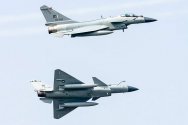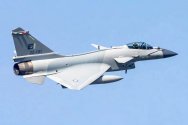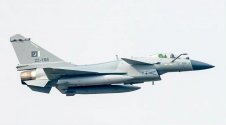Well the J-10C's engine does take up quite a lot of space compared to the Rafale, so I would not be surprise if the Rafale carries more fuel. In fact, it is widely believed that the Rafale has a combat radius of 1700+km, which is greater than those of the Su-27 and nearly matches those of the F-15. However, the single engine on the J-10C is more powerful, and the bigger radome allows for a bigger AESA. The best comparison to the J-10C is the F-16 Viper, but as mentioned earlier, the Viper (also a single powerful turbofan engine like the J-10 as opposed to Rafale's two medium-sized turbofan engines) somehow has a super short combat radius of 550-600 km without conformal fuel tanks.
I would argue that in the case of Pakistan, while India's Rafales surely have longer strike ranges, J-10C's bigger AESA radar gives it an edge in BVR combat.
Erm. 4.7t fuel is anything but a lot for a 25t-class twin-engine fighter - in fact, it's perfectly feasible to carry as much in a competitive
single-engined medium aircraft. I.e. its range on internal fuel is ... well, not exactly pathetic, but unimpressive(~mig-29smt/upg level).
The only way Rafale gets its huge range numbers is with its huge drop tanks, which the French Air Force carries almost routinely (with a corresponding effect on flight performance, of course).
p.s. also, combat radius of Su-27/j-11 is almost
twice that of F-15, and both numbers are weeeell below those you've assumed. If you're comparing numbers - please bother to find the same numbers, and not just find highest ones from Wikipedia. It will also help you with F-16, which, sure, isn't impressive - but definitely not 'super short'.



